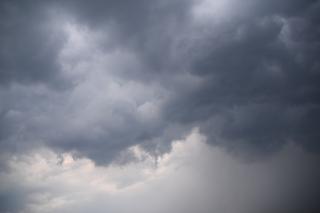September 1st Climate and Water Report for Utah

Current Valley Conditions (SCAN)
August was similar to July in Utah’s valley locations, where an unusually strong monsoon boosted our precipitation totals by an average of 1.5 inches. Most SCAN sites in the state received well above-normal precipitation, bringing the statewide water year total to 7.3 inches. With that additional rainfall, the five SCAN sites in the Sevier and San Pitch watersheds are now close to average for this time of year, with most other sites in the 70-90% of normal range. Still lagging behind are the SCAN sites in the Weber-Ogden, Beaver, and Raft basins, plus a few in far southern Utah. Soil moisture conditions at Utah’s SCAN sites have correspondingly improved from the rainfall, with sites in the North Central region well above-normal and other areas closer to average for this time of year. Soil temperatures across most of the state ended August near normal. While the entire state is still experiencing severe (D2) to exceptional (D4) drought, the portion of Utah experiencing D4 is down to 24%, from 51% at the beginning of the month.
Current Mountain Conditions (SNOTEL)
August precipitation in Utah’s mountain locations was very helpful! Statewide, we received 3.7 inches of rainfall for the month, which is 214% of normal and brings the water-year-to-date precipitation up to 79% of average. As noted in last month’s report, a key benefit of this late-summer rainfall is an improved likelihood of an efficient snowmelt runoff (when next winter’s snowpack melts in spring 2022) due to elevated soil moisture levels. Encouragingly, soil moisture in Utah’s mountains has benefitted greatly from the unusually strong monsoon season and is currently above-average at 47% of saturation (compared with just 24% at this time last year). Soils are likely to remain at roughly average moisture levels or above for rest of this water year because we are approaching the fall season when our mountain soils don’t typically lose as much moisture to evapotranspiration compared with summer months. However, as noted in last month’s summary, Utah’s water supply conditions are still very stressed. If we combine the current precipitation deficit with last year’s, we get 14.1” of additional moisture (above and beyond what we normally receive) that is needed to get us back to ‘normal’. Utah’s reservoir storage is currently at 49% of capacity, which is 18% lower than last year at this time, causing our Water Availability Indices (WAIs) to remain at historically-low levels (bottom 20th percentile) for 9 of Utah’s 18 major basins. Particularly hard-hit are the Ogden, Provo, Weber, and Joe’s Valley watersheds.

